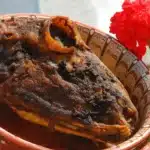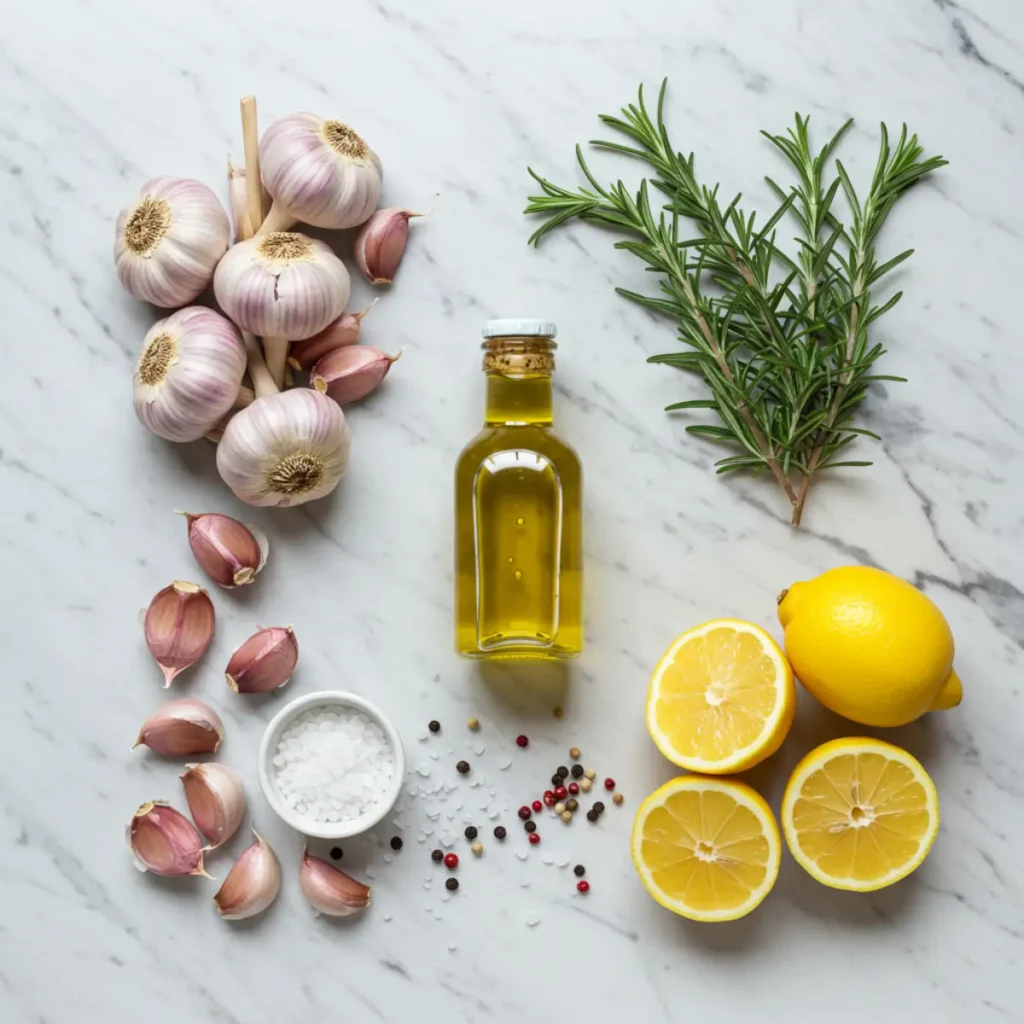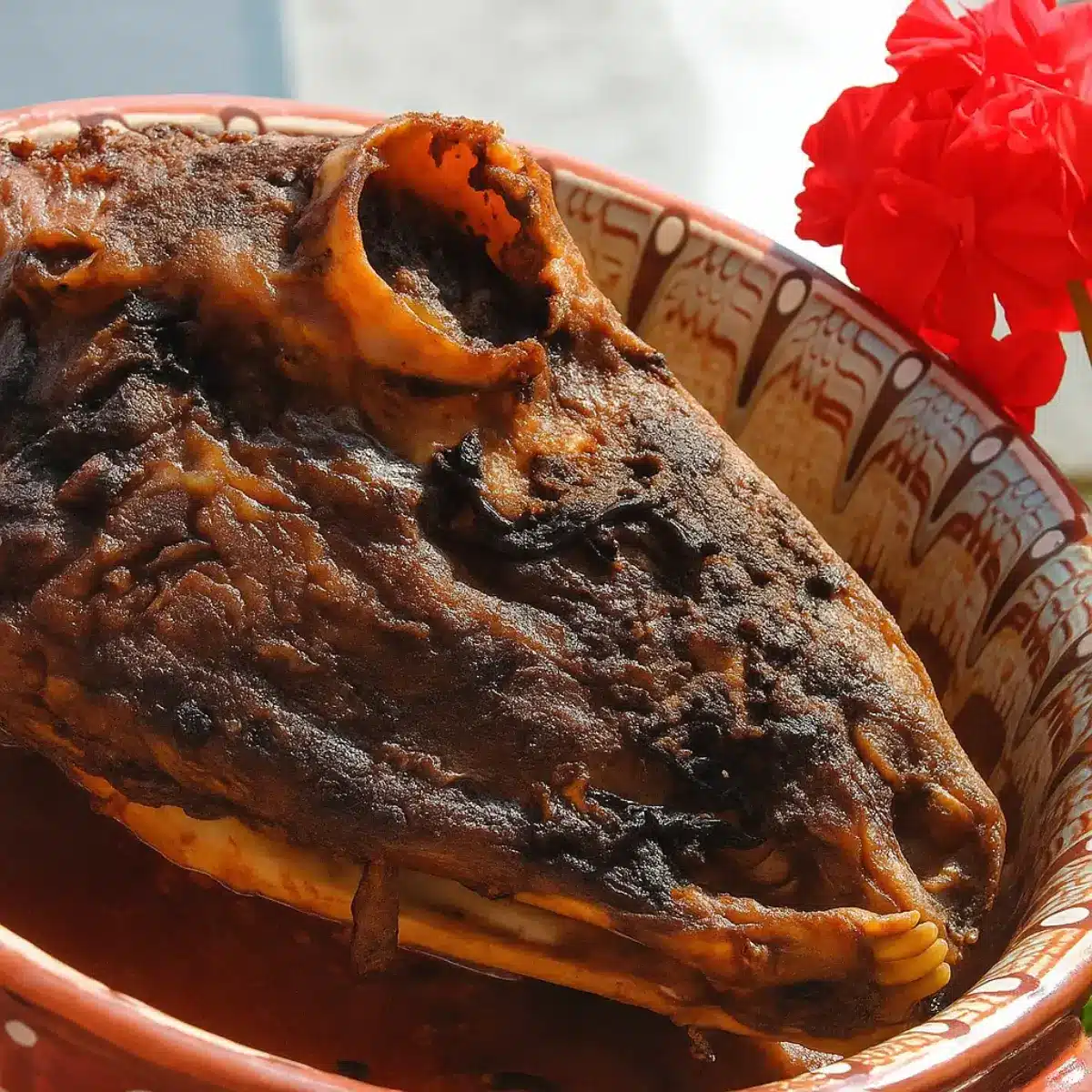Capuzzelle recipe is a bold yet beautiful introduction to traditional Italian cooking. At first glance, preparing a lamb’s head might seem intimidating, but this time-honored dish is rustic, rich, and surprisingly elegant in its simplicity. I still remember the first time I encountered a capuzzelle recipe in a quiet village near Naples—the savory aroma of garlic, rosemary, and slow-roasted meat drifting through the air. It was earthy, deeply nourishing, and full of soul. Bringing this tradition into my own kitchen has become a way to blend ancient flavors with mindful, modern living.
Table of Contents
Capuzzelle Recipe Origins: The Story of My First Taste
Capuzzelle Recipe and a Surprising Italian Market Memory
My first encounter with a capuzzelle recipe happened in a bustling southern Italian market, not a fancy restaurant. I had been exploring local food traditions while traveling solo—something I often do to expand my cooking wisdom. There, in a butcher’s glass case, sat an entire lamb’s head, seasoned, ready to roast. An old woman explained with pride how this dish was reserved for feast days and special occasions, where nothing of the animal went to waste. Her love for this dish was contagious.
That night, I tasted capuzzelle roasted in an outdoor oven. The meat was tender, slightly gamey, and infused with garlic and lemon. It reminded me of slow food traditions I admire—those that honor every part of an ingredient. When I returned to Texas, I knew I had to recreate this traditional capuzzelle recipe, not only to honor that experience but to show my family how deeply satisfying such ancestral recipes can be.
What Makes Capuzzelle So Unique?
Capuzzelle is more than just a lamb’s head—it’s a recipe passed down through generations. The slow roasting method lets collagen-rich meat break down into buttery bites. It’s rich in flavor and nutrients, and when prepared with love, it becomes an unforgettable meal. If you’re someone who’s enjoyed natural zepbound-style cooking or recipes like oatzempic drinks, this might be the next bold tradition to try. It celebrates whole food use, deep flavor, and cultural respect, just like pumpkin seed tea does for ancestral healing herbs.

Capuzzelle Recipe
- Prep Time: 5 minutes
- Cook Time: 3 hours
- Total Time: 3 hours 15 minutes
- Yield: 4 servings
- Category: Traditional Recipes
- Method: Roasting
- Cuisine: Italian
Description
Capuzzelle recipe is a bold and traditional Italian lamb’s head dish slow-roasted with garlic, herbs, and lemon. Deeply nourishing and rich in flavor.
Ingredients
- 1 whole lamb’s head (cleaned)
- 3 tbsp olive oil
- 6 cloves garlic (sliced or crushed)
- 2 sprigs fresh rosemary
- 1 tsp sea salt
- ½ tsp black pepper
- 1 lemon (sliced)
- Optional: ¼ cup dry white wine
Instructions
- Preheat oven to 325°F (160°C).
- Rinse the lamb’s head thoroughly. Pat dry.
- Rub olive oil all over the head.
- Insert garlic slices and rosemary into the crevices.
- Sprinkle salt and pepper evenly.
- Add lemon slices over and around the head.
- Place in roasting pan and roast uncovered for 2.5–3 hours.
- Baste occasionally with juices or wine.
- When meat pulls away easily, remove from oven and serve.
Notes
- Ask your butcher to clean and split the lamb’s head for easier roasting.
- Serve with bitter greens, potatoes, or fresh lemon juice.
- Leftovers can be stored and used in soups or stews.
Capuzzelle Recipe Ingredients and Simple Preparation

Capuzzelle Recipe Made Simple: What You’ll Need to Begin
Capuzzelle recipe preparation begins with sourcing a fresh or properly cleaned lamb’s head—something you can often find at a specialty butcher or international market. The dish relies on a few humble but powerful ingredients to unlock rich, savory flavor. You’ll need olive oil, garlic cloves, rosemary sprigs, sea salt, black pepper, lemon, and optionally, a splash of white wine. These pantry staples allow the natural flavor of the meat to shine.
If you’ve tried nourishing recipes like my Himalayan salt weight loss drink or the chia seed water detox, you already understand the power of minimal, real ingredients. The capuzzelle recipe follows that same philosophy: simple, slow, and rewarding.
Start by rubbing the lamb’s head with olive oil, then generously season it with garlic, salt, pepper, and herbs. Stuff a few cloves into crevices like the cheeks and behind the jaw. Roast uncovered at a low temperature (around 325°F) for 2.5 to 3 hours, occasionally basting with juices. You’ll know it’s ready when the meat easily pulls away from the bone.
Traditional Capuzzelle Recipe: A Dish With Roots and Respect
This traditional capuzzelle recipe reflects a deep respect for whole-animal cooking, honoring parts often forgotten. In many cultures, including Italian countryside communities, head-to-tail eating is a form of gratitude—nothing wasted, everything appreciated. It’s also a surprisingly nutrient-dense meal, loaded with collagen, minerals, and slow-roasted richness.
I love serving it with bitter greens, roasted fennel, or a side of lemon-dressed potatoes for contrast. Recipes like this share the same wellness spirit as my apple peel weight loss recipe, offering both nourishment and tradition in every bite. It’s bold, yes—but also honest and deeply satisfying.
Capuzzelle Recipe Flavor, Texture, and Mindful Serving
Capuzzelle Recipe Taste: What to Expect from This Traditional Dish
Capuzzelle recipe flavors are earthy, rich, and deeply savory. The slow roasting process transforms the meat into soft, tender bites that almost melt in your mouth. Each part of the lamb’s head offers a unique texture—cheek meat is buttery and delicate, the tongue is firm yet smooth, and even the roasted brain (if you choose to include it) adds a creamy layer of depth.
The taste might surprise you—it’s not gamey or overpowering, just rich and clean. When seasoned well with garlic, rosemary, lemon, and sea salt, the flavors become comfortingly rustic. If you’ve tried recipes like my burnjaro herbal blend or the mineral-rich pumpkin seed bariatric drink, you know the kind of grounding, earthy flavor this dish delivers. It’s not fancy—but it feels ancestral, something your body instinctively recognizes as nourishing.
Serving Capuzzelle the Mindful Way
When I prepare this traditional capuzzelle recipe, I always take a moment to acknowledge what it represents: a return to whole-food respect and old-world cooking wisdom. In our fast-paced lives, it’s easy to forget how healing a slow, intentional meal can be.
I like to serve capuzzelle simply—on a wooden cutting board with roasted garlic bulbs, lemon wedges, and maybe a drizzle of natural ozempic juice on the side to complement the richness. You can shred the meat right at the table, letting each person taste the different textures. Even my kids, though cautious at first, became curious and eventually delighted by the flavor and story behind the dish.
This capuzzelle recipe reminds us to slow down, use what we have fully, and treat every part of our meal with care. That mindset is at the heart of every recipe I share—mindful, clean, and deeply rooted in wellness.
Capuzzelle Recipe in Culture and Modern Wellness Revival
Capuzzelle Recipe Traditions: From Feasts to Family Tables
Capuzzelle recipe traditions go far beyond the food itself—they carry deep cultural meaning. In southern Italy, particularly in regions like Calabria and Campania, serving lamb’s head was once a proud part of Easter, Christmas, and family celebrations. It symbolized both humility and honor: using every part of the animal, cooking with patience, and gathering loved ones around the table.
The head wasn’t tossed aside or hidden—it was the centerpiece, celebrated for its flavor and nourishment. Preparing this traditional capuzzelle recipe was often seen as an act of skill and care, passed down from nonnas who could season with instinct and carve with wisdom. That same spirit echoes through other traditional, whole-body recipes, like my beetroot detox drink, which also pulls from age-old wellness rituals.
I believe that today, more than ever, we need these kinds of food traditions—especially when they reconnect us to gratitude and intention in our meals.
Why Capuzzelle Belongs in Today’s Natural Kitchen
The modern wellness movement is finally embracing what the old world knew all along: real food heals. Bone broth, organ meats, and slow cooking are coming back not because they’re trendy, but because they work. The capuzzelle recipe fits beautifully into this revival. It’s packed with collagen, iron, healthy fats, and minerals—nutrients many of us unknowingly lack.
If you’re already making smart swaps with things like my turmeric belly fat tonic or sipping on dandelion tea for liver health, this dish is your next natural step.
This isn’t just about eating differently—it’s about thinking differently. Honoring old traditions. Valuing the whole animal. Slowing down enough to cook something that takes time, heart, and a little courage. The capuzzelle recipe is more than just food—it’s a story, a ritual, and a return.
Capuzzelle Recipe Prep Guide: Where to Buy, How to Clean, and Kitchen Safety
Capuzzelle Recipe Shopping Tips: Where to Buy Lamb’s Head
Capuzzelle recipe success begins with sourcing the right ingredients—especially the lamb’s head. Depending on where you live, it might not be something you see at your local grocery store, but don’t worry. Most specialty butchers, halal markets, or Latin/Mediterranean grocers can either provide it or order it fresh for you. Always ask for it skinned and cleaned if you’re just starting out.
You’ll want the eyes intact (they add flavor while roasting but are optional to eat), and the tongue and cheeks must be present—those parts are the most tender and flavorful. If you’ve felt intimidated by ingredient sourcing before, just remember: it’s no more complicated than getting ingredients for something like the natural Zepbound recipe or the papaya and lemon juice detox. It’s simply a matter of asking the right butcher.
How to Prep a Traditional Capuzzelle Recipe Safely at Home
Once home, rinse the lamb’s head thoroughly in cold water. Use lemon juice and coarse salt to scrub it down—this neutralizes any lingering odor and ensures a clean flavor. Pat dry completely before seasoning or roasting. If you’re feeling bold, use a sharp knife to split it in half lengthwise (some butchers will do this for you). This helps it cook faster and more evenly.
Lay the head open-faced on a roasting pan with garlic, rosemary, and olive oil tucked into every fold. As with my blue spirulina coconut water recipe, cleanliness and ingredient quality are everything here. A clean prep equals a deeply flavorful, nourishing result.
Proper handling makes the capuzzelle recipe not just safe but empowering. It turns what might seem like an unusual ingredient into something timeless, honest, and unforgettable.
Capuzzelle Recipe Leftovers: Storage, Reheating, and Second-Day Flavor
Capuzzelle Recipe Storage: Keeping It Fresh and Flavorful
Capuzzelle recipe leftovers store surprisingly well, and in fact, they often taste even better the next day. Once cooled to room temperature, remove any remaining meat from the bone—cheeks, tongue, and even brain, if used—and store it in an airtight container in the refrigerator for up to 3 days. Pour any roasting juices over the top to keep it moist and prevent drying.
If you’re someone who already batch-preps wellness drinks like the cortisol tea recipe or the cortisol cocktail for weight loss, this process will feel familiar: thoughtful storage = delicious reuse. Just be sure to separate bones and herbs before storing, and use glass containers to preserve the deep flavors.
Reheating Traditional Capuzzelle Recipe Without Drying It Out
To reheat the traditional capuzzelle recipe, skip the microwave—it tends to dry out the delicate meat. Instead, gently warm it in a small covered pan with a splash of bone broth or water. Low and slow heat preserves its tenderness while refreshing the garlic and rosemary infusion. In fact, I often roast a few fresh garlic cloves and toss them in to revive that just-out-of-the-oven aroma.
Another idea? Turn leftovers into a rustic soup or stew. Toss shredded meat into a simmering pot of lentils, or combine it with roasted vegetables and broth for a healing bowl of comfort. It’s deeply satisfying—just like how healthy oatmeal bites bring joy from simple, wholesome ingredients.
Even after the first meal is done, the capuzzelle recipe keeps giving—offering flavor, nourishment, and connection to tradition well beyond day one. It’s not just a dinner—it’s a whole experience, one that invites creativity, resourcefulness, and reverence for food.
FAQs
What is capuzzelle?
Capuzzelle is a traditional Italian dish made by slow-roasting a whole lamb’s head. It’s deeply rooted in Southern Italian culinary culture, especially in regions like Calabria and Campania. The name “capuzzelle” literally translates to “little head,” and the recipe honors the old-world philosophy of using the entire animal in cooking. The capuzzelle recipe reflects both respect for the animal and a celebration of bold, ancestral flavors.
What does lamb’s head taste like?
Lamb’s head offers a variety of textures and flavors. The cheeks are rich, tender, and almost buttery. The tongue is slightly firmer but very flavorful. Some parts, like the brain and eyes, are optional to eat and have a creamy, mild taste. Overall, the flavor is savory, earthy, and deeply satisfying. It’s less gamey than you might expect—especially when prepared with lemon, garlic, and herbs as in a traditional capuzzelle recipe.
What is Italian capuzella?
Italian “capuzella” or “capuzzelle” refers specifically to the lamb’s head dish. It’s a staple of southern Italian cooking and often appears during Easter or major family gatherings. Unlike modern, polished cuisine, it highlights ancestral resourcefulness, whole-food nutrition, and deep, slow-cooked flavor. Preparing a capuzzelle recipe today brings a taste of Italy’s past to the present wellness kitchen.
How to cook sheep head traditionally?
To cook sheep head traditionally, it’s first cleaned thoroughly, then seasoned with olive oil, garlic, rosemary, salt, and lemon. It’s roasted uncovered at a low temperature—around 325°F—for 2.5 to 3 hours until the meat is fall-apart tender. Some families steam or boil the head first to soften the meat, then finish it in the oven for a golden roast. This method is at the heart of any authentic capuzzelle recipe.
Conclusion
Capuzzelle recipe is more than a dish—it’s a tradition, a story, and a deep act of nourishment. From the bustling Italian markets where I first tasted it, to the quiet corners of my Texas kitchen, this dish continues to surprise and satisfy in the most grounded way. It reconnects us to ancestral wisdom, encourages whole-food respect, and reminds us that healing doesn’t have to be pretty—it just has to be real.
If you’ve ever loved a slow-brewed herbal tea, a gently prepared detox drink, or an old-fashioned stew made from scratch, then you’re already fluent in the language this traditional capuzzelle recipe speaks. Bold, nutrient-rich, and rooted in gratitude—it’s exactly the kind of dish we need more of.
So go ahead—slow down, roast that lamb’s head, and serve something extraordinary at your table.
Follow us on Pinterest for weekly slow cooker inspiration, or join the conversation over on our Facebook page where fellow food lovers share their favorite comfort meal.





